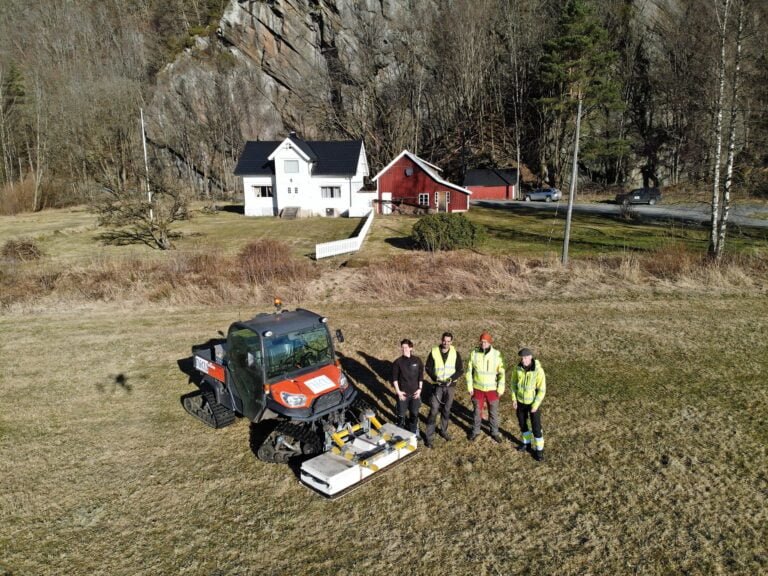Archaeologists examining a field with georadar technology have found a new Viking ship grave. It is the latest in a list of recent discoveries by georadar technology.
Burying the dead in boats was a practice found in several coastal settlements during the Viking Age. Recent advances in georadar technology have resulted in more of these rare boat graves being discovered in various parts of Norway.

Now, archaeologists have discovered a previously unknown boat grave in Kvinesdal, southern Norway. The georadar scan was done in connection with the construction of the new E39 highway.
Boat grave and burial mounds
The discovery was made on a plain at Øyesletta, already known to be one of the largest burial grounds in the south of Norway.
However, it is the first boat grave to be discovered in the area. Such finds are rare, and would have been reserved for significant people in society. Several burial mounds were discovered close to the boat grave.
“It's not every day that archaeologists come across boat graves from the Viking Age,” said Nye Veier archaeologist Frans-Arne Stylegar.
However, more work will have to take place before the team understands the condition of the find. “We do not yet know how much of the boat and grave goods have been preserved. Some boat graves are richly equipped,” he added.
An ongoing archeology research project
The archaeological work was done as part of Nye Veier's project Arkeologi på nye veier (Archaeology on new roads). Archaeologists from the Norwegian Institute for Cultural Heritage Research (NIKU) did the work on behalf of Nye Veier.
NIKU archaeologist Jani Causevic discovered the boat grave in the georadar data: “This is incredibly exciting. Both to find such a discovery, but also to see how the use of georadar gives us the opportunity to explore and document cultural history through new and exciting methods.”

The boat is estimated to be 8-9 metres long and could serve as a grave for one or more people. The boat appears to have been cut into the ground, before a burial mound was built over it.
NIKU project manager Manuel Gabler is very pleased that this project is yielding results: “It is great fun to not only test and demonstrate how the method can be used practically in the registration process, but also contribute with such an exciting discovery.”
The largest Viking burial ground in south Norway
It had been thought that most remains of the burial ground—believed to have been in use in the Late Iron Age and Viking Age—had been lost forever.
Agder county municipality project manager Nils Ole Sundet confirmed to NRK it was a surprising discovery: “We thought the whole burial ground was lost forever. It is exciting that we are suddenly faced with this discovery.”

Previous burial mounds on farms at Øyesletta were gradually destroyed as a result of new machinery and methods of agriculture. Today, none of the former burial mounds are left. This latest discovery changes that.
“It is fantastic that our colleagues from NIKU have also found several surrounding burial mounds. This can make it possible to understand the site better,” said Claes Uhner, project manager from the Cultural History Museum, UiO.
Changes to the E39 project
Stylegar said it's too early to say whether the discovery will change anything in the new E39 road project. However, if a supply road is to be built on the land, then a excavation will be required.

